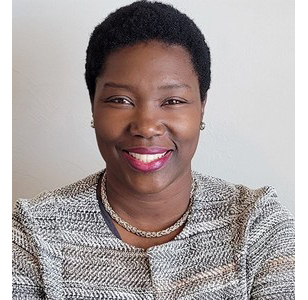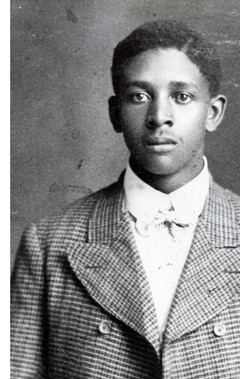|
On This Day in History
On February 8, 1924, Ada Lois Sipuel Fisher (1924–1995) was born in Chickasha, Oklahoma.
While attending Langston University in the 1940s, Fisher dreamed of becoming a lawyer. On January 14, 1946, Fisher applied for admission to the University of Oklahoma College of Law (OU Law). After reviewing her credentials, the university’s president, Dr. George Lynn Cross, advised Fisher that there was no academic reason to reject her application for admission, but that Oklahoma statutes prohibited Black students from attending classes with white students. With the support of civic leaders from across the state, Fisher filed a lawsuit challenging Oklahoma’s segregation law. Following a three-year legal battle, a US Supreme Court ruling, and continued inequity, Fisher was finally admitted to law school at the University of Oklahoma in 1949. She graduated from OU Law in 1952. Learn more about Ada Lois Sipuel Fisher in The Encyclopedia of Oklahoma History and Culture.
Photo: Civil rights pioneer Ada Lois Sipuel Fisher stands with Thurgood Marshall, later a justice of the US Supreme Court, during Fisher's 1948 legal battle (detail, 2012.201.B1268.0091, Oklahoma Publishing Company Photography Collection, OHS).
|
|

LUNCH AND LEARN
“Turning Records into an Archive: A Reflection on the Oklahoma Black Homesteader Project” webinar with Dr. Kalenda Eaton
On Thursday, February 23, at noon (Central Time) the State Historic Preservation Office (SHPO) will hold a free virtual webinar titled “Turning Records into an Archive: A Reflection on the Oklahoma Black Homesteader Project” presented by Dr. Kalenda Eaton.
Over the past year, a small team of scholars have worked to piece together an intriguing history of hope, migration, settlement, perseverance, and politics on the Plains. The Oklahoma Black Homesteader Project, led by Dr. Kalenda Eaton, was created to research and organize the experiences of African Americans who entered Oklahoma Territory from 1889–1920 and directly benefitted from the Federal Homestead Act of 1862. The presentation will include a brief description of the project, a discussion of the process and methodology, a few surprise findings, and a reflection on the role digital archives can have in making rural western Black history visible. Kristina Wyckoff, the SHPO's historical archaeologist, will join in the presentation.
Register for the webinar
|
|
|

FEBRUARY IS BLACK HISTORY MONTH
Black History is Oklahoma History
As an educational organization and a dedicated community partner, the Oklahoma Historical Society (OHS) has long believed that one important step toward ending racism and injustice is a better understanding of our shared history. By providing resources that give context for the Black experience in Oklahoma, we hope to spark civil discourse and open dialogue about the role of race in the history of our state. While these conversations about our past may not be comfortable, they are necessary to understand where we have been and how we can best move forward together.
Since 1893, the Oklahoma Historical Society has collected and shared the story of Oklahoma. In the 1980s, the OHS began a concerted effort to engage with Oklahoma’s Black community—to listen to their stories and share their experiences. While we have made both mistakes and significant strides, we will continue to do better and do more. The OHS stands committed to our mission to collect, preserve, and share the history and culture of all Oklahomans. Learn more and browse free resources related to the Black experience in Oklahoma by clicking below.
Photo: Claude Devoyd Hall, a Chickasaw Freedman and the first African American instructor at the Freedom School, Tishomingo, Indian Territory, c. pre-1906 (20699.80.44.2, Rubye M. Hall Collection, OHS).
|
|
|
|
Click event listings below for more information.
10 - Museum After Dark: Date Night at the Museum, Cherokee Strip Regional Heritage Center, Enid
11 - Quilting workshop with Martha Ray, Sod House Museum, Aline
11 - Carriage House Sit and Sew, Henry and Anna Overholser Mansion, Oklahoma City
11 - Hammered Moon and Star Earrings workshop, Oklahoma History Center, Oklahoma City
11 - Second Saturday Sewing Circle, Fort Towson Historic Site, Fort Towson
15 - Oklahoma Historical Society Executive Committee meeting, Oklahoma History Center, Oklahoma City
18 - Museum OKademy volunteer training class and lecture, Cherokee Strip Regional Heritage Center, Enid
18 - History Alive! on the Cherokee Strip, Cherokee Strip Regional Heritage Center, Enid
18 - Kids Make History, Fort Towson Historic Site, Fort Towson
23 - “Lunch and Learn: Turning Records into an Archive: A Reflection on the Oklahoma Black Homesteader Project” presentation by Dr. Kalenda Eaton (VIRTUAL), State Historic Preservation Office, Oklahoma City
24 - Movie Night featuring Oklahoma! (1955), Will Rogers Memorial Museum, Claremore
25 - Make Your Own Retro Earrings workshop, Oklahoma History Center, Oklahoma City
25 - Hands-On Historic Skills, Fort Towson Historic Site, Fort Towson
26 - Antique Doll exhibit closes, Fred and Addie Drummond Home, Hominy
27 - Kilgen Organ performance and silent film The Mark of Zorro (1920) featuring Christian Elliott, Oklahoma History Center, Oklahoma City
28 - Oklahoma Route 66 Centennial Commission meeting, Oklahoma History Center, Oklahoma City
1 - “Hidden Oklahoma: Notable Archaeological Discoveries in Northwestern Oklahoma” presentation by Dr. Leland Bement (VIRTUAL), State Historic Preservation Office, Oklahoma City
2 - Living History Education Day, Fort Towson Historic Site, Fort Towson
3–5 - 1840s Encampment, Fort Towson Historic Site, Fort Towson
4 - Museum OKademy volunteer training class and lecture, Cherokee Strip Regional Heritage Center, Enid
4 - History Alive! on the Cherokee Strip, Cherokee Strip Regional Heritage Center, Enid
6 - A Very OK Podcast LIVE: The Bob Wills Story, Ponyboy, Oklahoma City
|
|
February is Black History Month
Click here to browse free resources about the Black experience in Oklahoma.
Masthead photo: A single-page circular and business directory advertising notable figures and officials of the town of Red Bird. Reverend Elbert L. Barber (fourth from left, middle row) was one of the town's developers who founded the First Baptist Church in Red Bird in 1889. He also became Red Bird's first justice of the peace and served as mayor. Iverson W. Lane (fifth from left, bottom row) fought for equal rights for Blacks in Wagoner County [Lane v. Wilson, 307 US 268 (1939)], which was decided in his favor in the US Supreme Court. He and Saub Bradley (sixth from left, bottom row) owned and operated two cotton gins, a grain elevator, and a farmers' merchandise store in Red Bird. This circular from the Currie Ballard Collection is on exhibit in the Kerr-McGee Gallery on the third floor of the Oklahoma History Center.
Red Bird is a historic All-Black town—one of 13 still incorporated today. A 14th town, IXL, was incorporated in 2001.
|
|
|
|
|